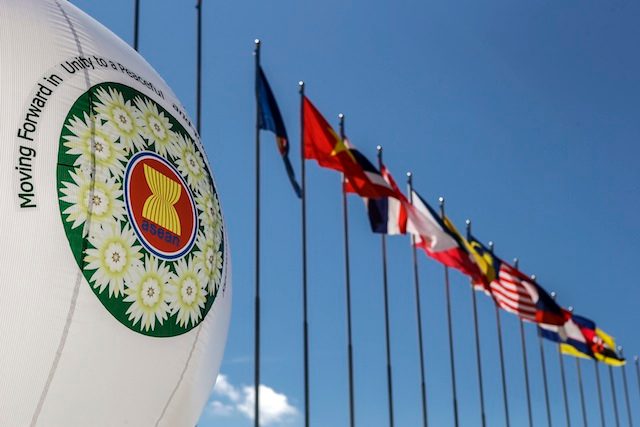SUMMARY
This is AI generated summarization, which may have errors. For context, always refer to the full article.

MANILA, Philippines – Resilient domestic demand will boost the country’s economic growth ahead of its major neighbors this year, said the International Monetary Fund (IMF) on Tuesday, May 3.
The Philippines is expected to have the fastest gross domestic product (GDP) growth among the 5 biggest economies of the Association of Southeast Asian Nations or ASEAN-5 in 2016, based on the IMF’s latest Regional Economic Outlook for Asia and the Pacific (REO).
The IMF pegged the GDP growth for the Philippines at 6% this year and 6.2% next year, retaining the earlier predictions in its April 2016 World Economic Outlook (WEO).
The growth would trump that of Indonesia’s 4.9%, Malaysia’s 4.4%, Thailand’s 3%, and Singapore’s 1.8%.
Among the 10 ASEAN nations, Myanmar is seen topping the region with its GDP growth expected to reach 8% in 2016 and 7.7% in 2017.
The Philippines’ GDP growth slowed to 5.8% last year from 6.1% in 2014 due to weak global demand and underspending, which hurt growth at the start of 2015. Growth did pick up in the 4th quarter at 6.3%.
The Philippines’ 2015 growth was also faster than Malaysia’s 5%, Indonesia’s 4.8%, Thailand’s 2.8%, and Singapore’s 2%.
Earlier, IMF resident representative Shanaka Jayanath Peiris said the Philippine economy would be driven by continued strong domestic demand and a modest fiscal stimulus in 2016.
This optimistic outlook is tempered, however, by increased downside risks in the Philippines, due mostly to a weak global economy.
“The economic outlook is one of the strongest in the region but subject to increased downside risks, including lower growth in China and the region, higher global financial volatility and capital outflows, and weather related disruptions,” Peiris said.
“However, the Philippines’ capacity to respond if these risks materialize is substantial given its ample reserves and policy space, both monetary and fiscal,” he added.
The World Bank has a slightly brighter outlook for the country, pegging economic growth at 6.4% for this year, 6.2% in 2017, and 6.2% in 2018.
Asia resilient
The IMF also believes that Asia as a whole will remain the engine of global growth despite a slight downturn.
It sees the GDP growth in Asia slowing down to 5.3% this year and next year from 5.4% in 2015.
While external demand, and thus exports, remains sluggish, the IMF said domestic demand continues to show resilience across most of the region due to low unemployment, growth in disposable income, lower commodity prices, and macroeconomic stimulus.
That said, the IMF did point out that the region’s two largest economies, China and Japan, face challenging years in the short term. (READ: China, Japan growth to slow sharply in 2016, IMF warns)
China’s growth is forecasted to drop from 6.9% to 6.5% this year and 6.2% in 2017 as it continues its shift to a consumer-oriented economy.
Japan, meanwhile, is expected to grow by 0.5% this year before sliding to -0.1% in 2017 as the effect of the widely anticipated consumption tax increase takes hold.
“Asia is impacted by the still weak global recovery, and by the ongoing and necessary rebalancing in China,” said IMF Asia-Pacific Department director Changyong Rhee.
“But domestic demand has remained remarkably resilient throughout most of the region, supported by rising real incomes, especially in commodity importers, and supportive macroeconomic policies in many countries,” he noted. – Rappler.com
Add a comment
How does this make you feel?
There are no comments yet. Add your comment to start the conversation.